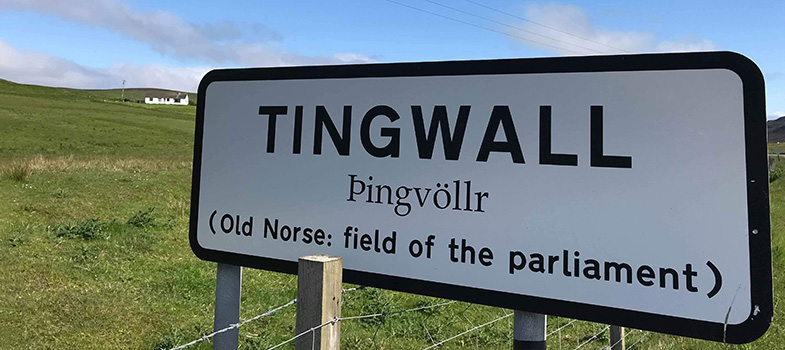9.3 Scots language drama after 1940
The political drive associated with writing in Scots seemed to be fading when in 1941 Glasgow's Unity theatre company [Tip: hold Ctrl and click a link to open it in a new tab. (Hide tip)] was formed by amalgamation of five radical amateur theatre companies. From the first, the company’s work included Scots versions of theatre classics, but, when it formed a professional company after the war, it produced more original work in Scots, some of the highest calibre.
One example of this is Ena Lamont Stewart’s Men Should Weep (1947), recognised, after a revival by 7:84 Theatre Company in 1982 and revivals by London’s National Theatre in 2010 and the Scottish National Theatre in 2011, as a masterpiece. Unity also premièred Robert McLellan’s The Flouers of Edinburgh in 1948, a period play exploring tensions as English began to be seen in Enlightenment Edinburgh as a more ‘polite’ language than Scots.
McLellan had begun in 1933 writing Scots language one-act plays in a somewhat sentimentalised and misogynistic version of rural Scottish conflicts, especially in the sixteenth-century Borders. After his dramatically more thoughtful Jamie The Saxt (1937), he returned to this demanding series of plays, but The Flouers of Edinburgh marked a new stage in his writing, exploring profound issues of national identity, including language, in vibrant Scots dialogue. The Flouers of Edinburgh was complemented by the 1948 revival of a version of Lindsay’s masterpiece, The Thrie Estaitis, in Robert Kemp’s bowdlerised version.
What the pioneers of the 1920s, the Glasgow Unity writers, McLellan and Lindsay (via Kemp) stimulated was a recognition that Scots was a lively language for the stage, sophisticated and available for political activism, and that audiences loved hearing it spoken. Alexander Reid, McLellan’s contemporary, wrote in 1958 in a preface to his Two Scots Plays:
If we are to fulfil our hope that Scotland may some day make a contribution to World Drama […] we can only do so by cherishing, not repressing our national peculiarities (including our language), though whether a Scottish national drama, if it comes to birth, will be written in Braid Scots or the speech, redeemed for literary purposes, of Argyle Street, Glasgow, or the Kirkgate, Leith, is anyone's guess.
During the 1960s, it seemed as if the energy of Scots language drama was under threat. Unity had closed in 1951. McLellan seemed isolated and focused on historical themes. Other attempts at Scots language drama like Sydney Goodsir Smith’s The Wallace (1960) – with the exception of John Arden’s Armstrong’s Last Goodnight (1964) – were stilted, static and backward-looking.
In the 1970s, however, growing out of the work of earlier playwrights and their experiments, and using the demotic Scots of ‘Argyle Street, Glasgow, or the Kirkgate, Leith’, usually in a way Reid would not have thought ‘redeemed’, a new generation emerged. This revitalised the use of Scots on stage in a way that continues to this day. Highlights of such work in the 1970s include Bill Bryden’s Willie Rough (1972), Tom McGrath’s The Hard Man (1977) and John Byrne’s Slab Boys trilogy (1978-82).
Since then, Scots language drama has shown itself capable of dealing with a wide range of important topics, whether issues of national and gender stereotypes in Liz Lochhead’s Mary Queen of Scots got her head chopped off (1987), class and gender oppression in Sue Glover’s Bondagers (1991) or issues of military life and the Iraq War in Gregory Burke’s Black Watch (2006).
Activity 8
This activity is designed to help you summarize the key information about Scots language drama after 1940.
Match the listed qualities of Scots language plays with the eras in which they were written and performed according to the information in the text.
a.
1940s and 50s
b.
1960s
c.
1970s
d.
1980s - early 21st century
The correct answer is a.
a.
1940s and 50s
b.
1960s
c.
1970s
d.
1980s - early 21st century
The correct answer is c.
a.
1940s and 50s
b.
1960s
c.
1970s
d.
1980s - early 21st century
The correct answer is b.
a.
1940s and 50s
b.
1960s
c.
1970s
d.
1980s - early 21st century
The correct answer is d.
a.
1940s and 50s
b.
1960s
c.
1970s
d.
1980s - early 21st century
The correct answer is b.
a.
1940s and 50s
b.
1960s
c.
1970s
d.
1980s - early 21st century
The correct answer is a.
a.
1940s and 50s
b.
1960s
c.
1970s
d.
1980s - early 21st century
The correct answer is d.
a.
1940s and 50s
b.
1960s
c.
1970s
d.
1980s - early 21st century
The correct answer is a.
a.
1940s and 50s
b.
1960s
c.
1970s
d.
1980s - early 21st century
The correct answer is d.
a.
1940s and 50s
b.
1960s
c.
1970s
d.
1980s - early 21st century
The correct answer is a.
9.2 Scots in drama since the 1900s
